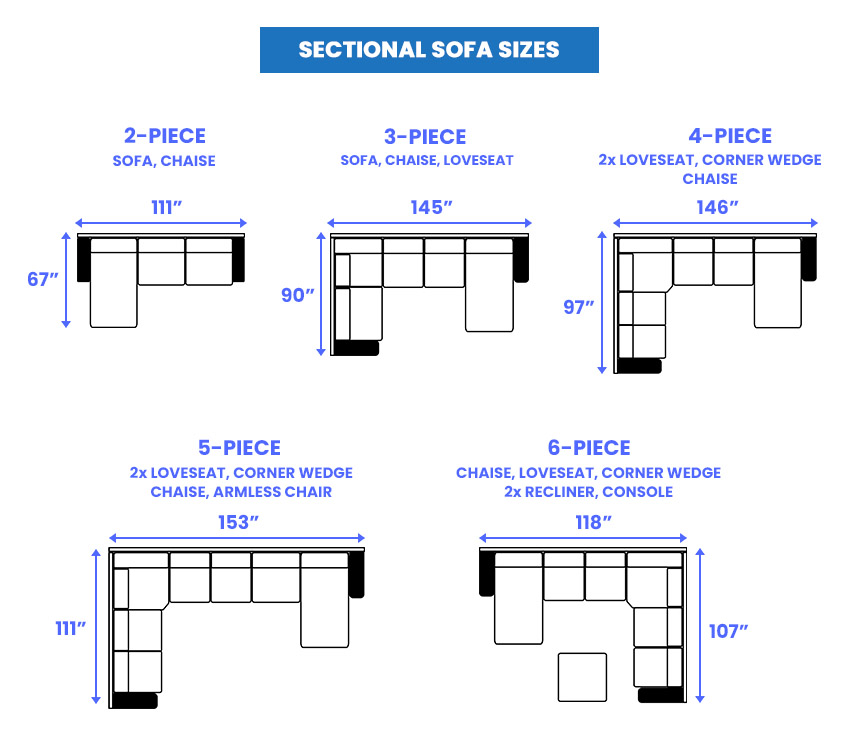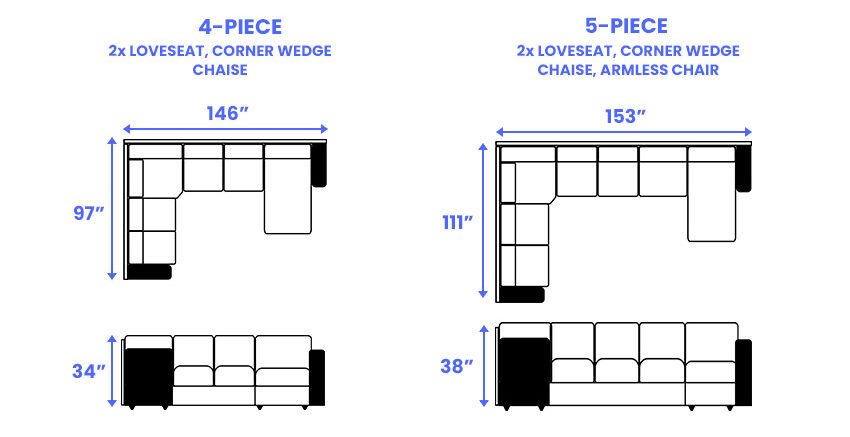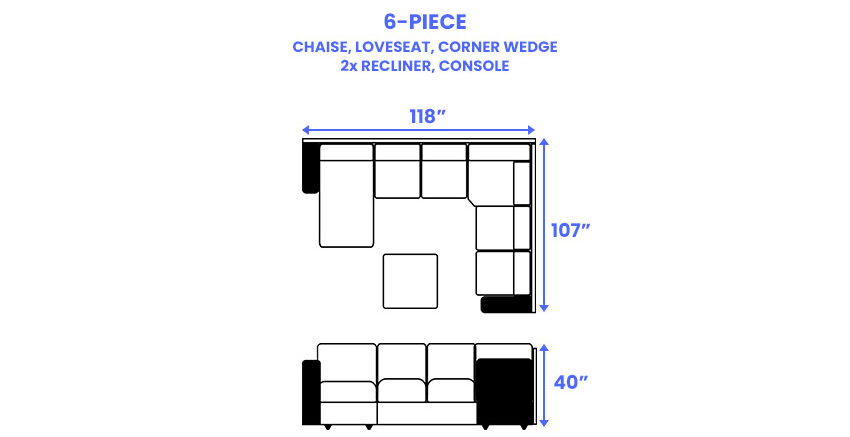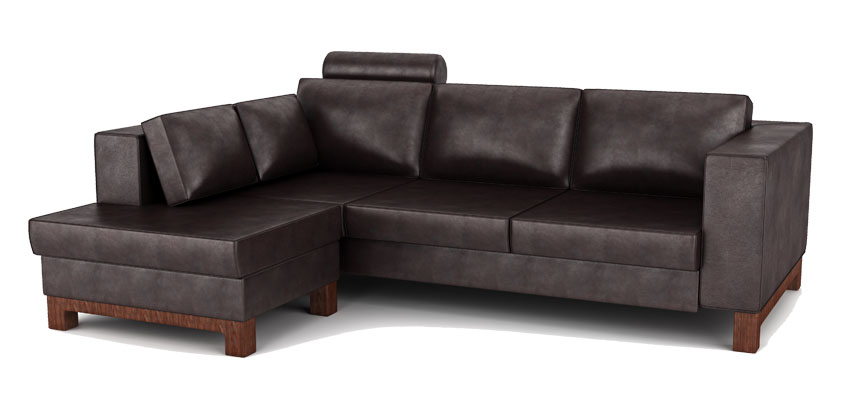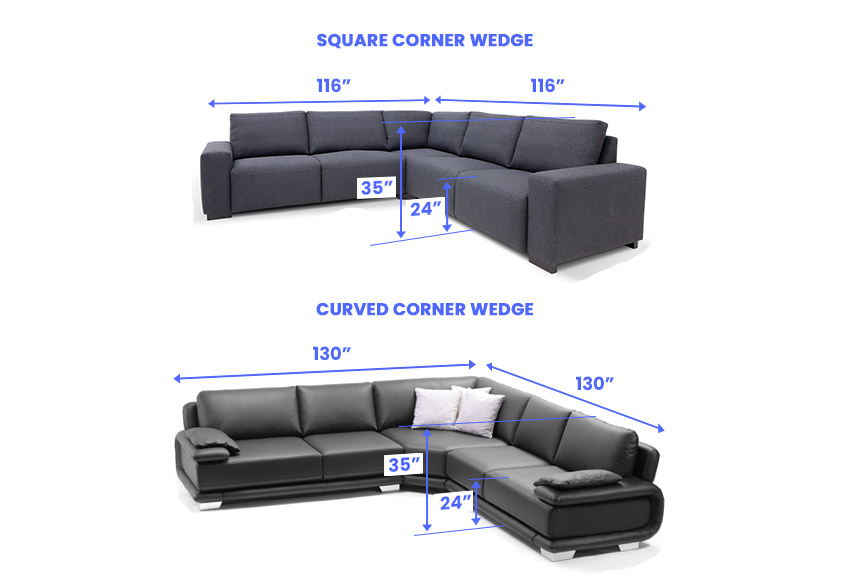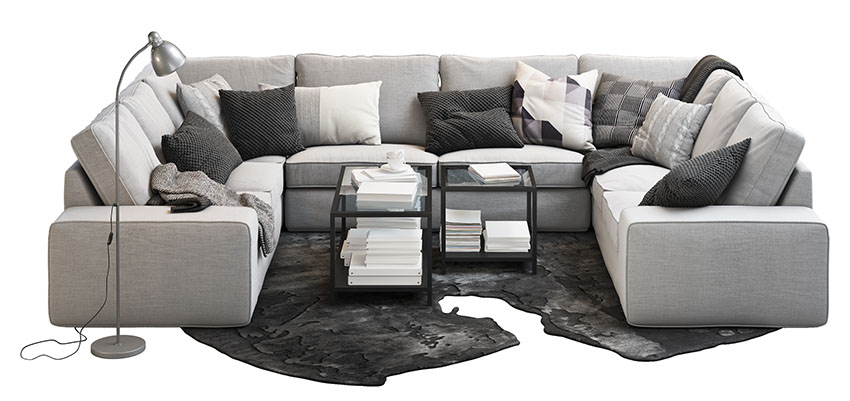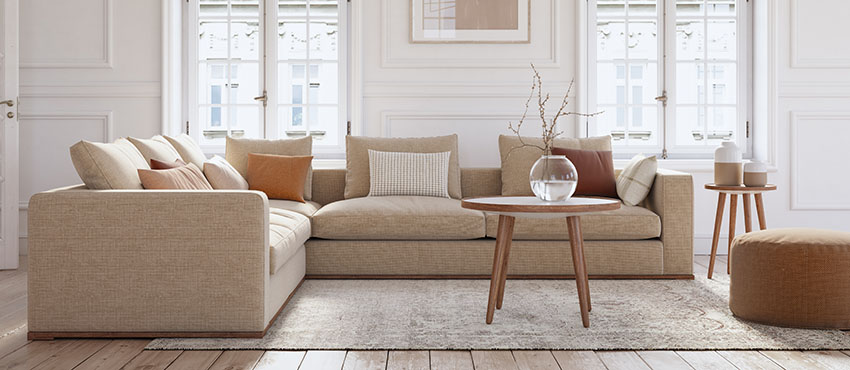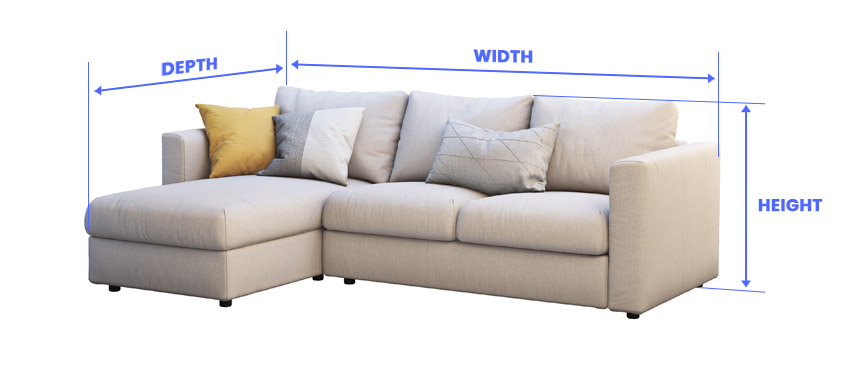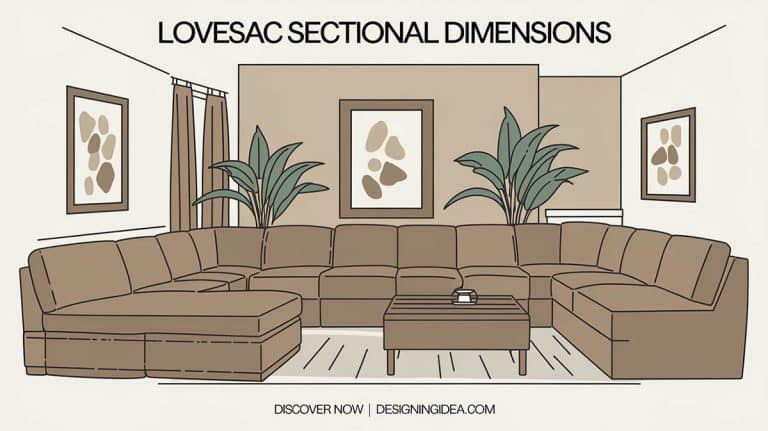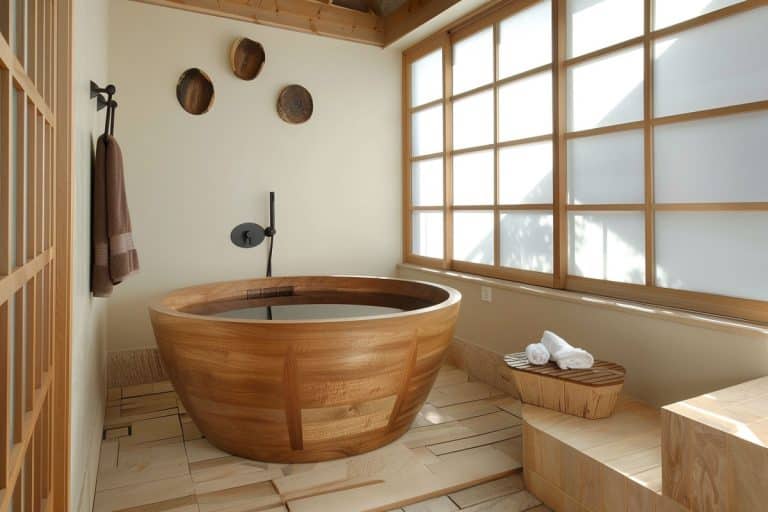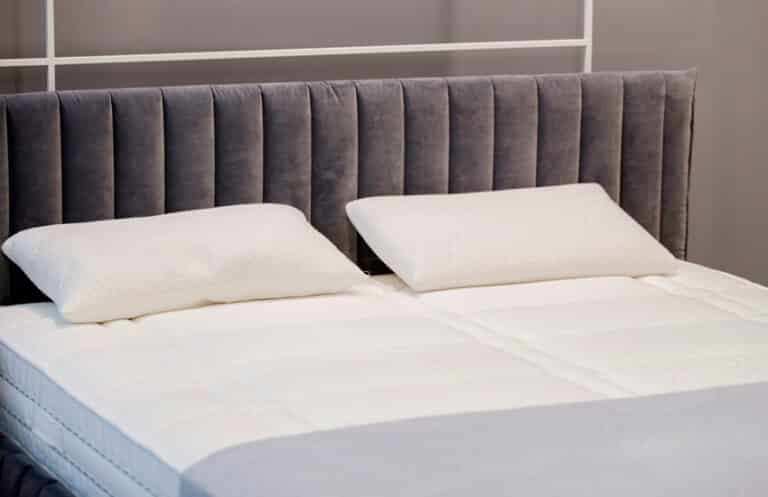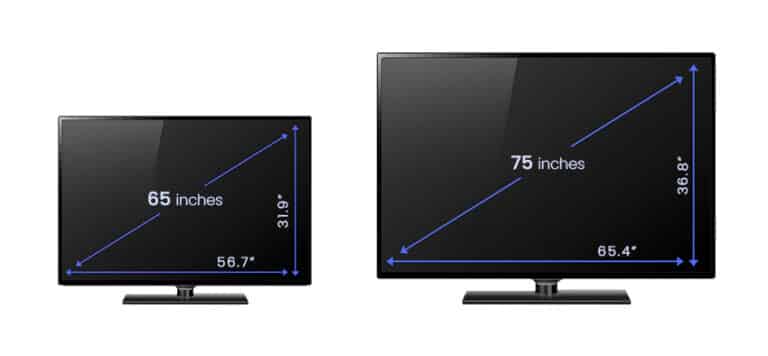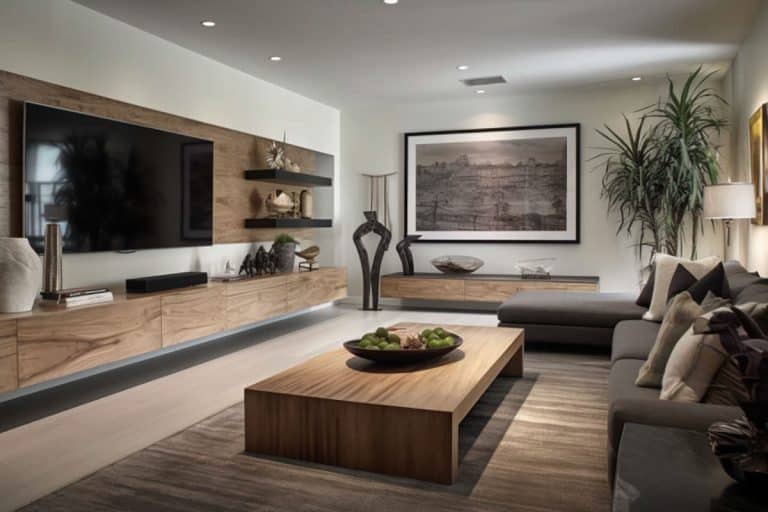Sectional Sofa Dimensions (Sizes Guide)
Here’s our sectional sofa dimensions guide including different sizes, space needed, how big a rug to use, and how to measure a sectional sofa.
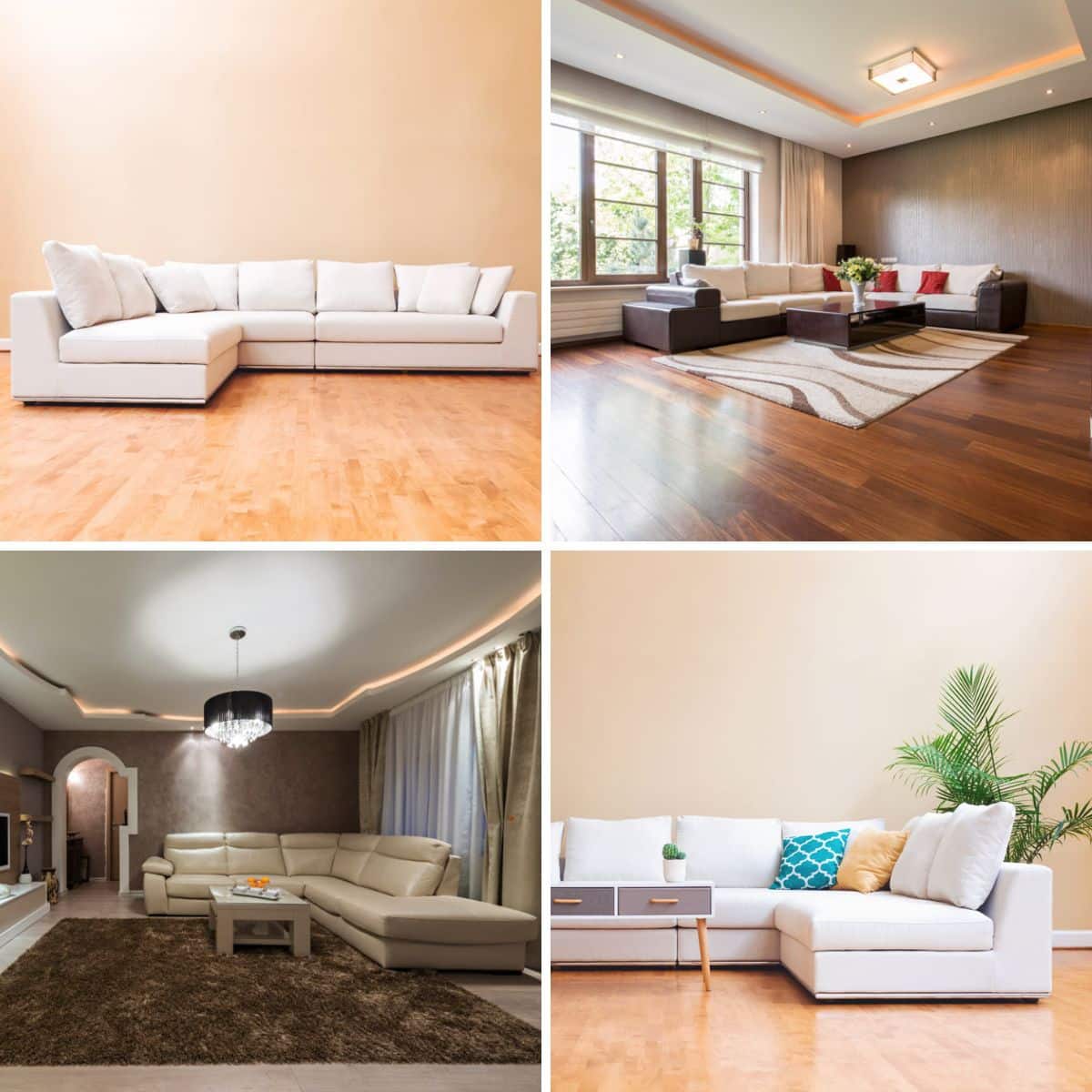
A great way to upgrade your next couch is to choose a sectional next, and if you are looking for more seating space, this is undoubtedly the choice for you. This furniture is all the seating options in one, from a loveseat to a sofa to an ottoman and a chaise.
These sofas often turn 90-degrees and have a corner configuration together with the other cushioned seat. If you want to maximize seating space, just make sure that you measure the area correctly, and a sectional will be perfect for your room! Here is more information about this sofa type.
Standard Sectional Size
This sofa type are composed of many individual pieces of cushioned seats that can be rearranged no matter how you want them. If you are looking for seating bigger than a three or four-seater sofa, then a sectional is the most suitable for you.
Each sofa seat cushion for a section is a combined sofa, recliner, corner wedge, or even ottoman, to make an all in one complete seating area.
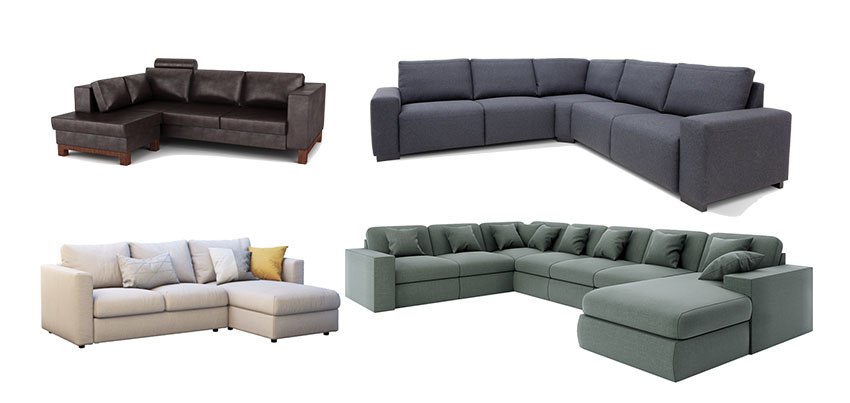
You must know the shape you want and how big you want them since some stores specializing in this sofa can have you buy however big you want them.
What Sizes Do Sectionals Come In?
The sizewould depend on the types of sectional sofas you prefer, whether stationary or reclining and what size you need for your home.
There are types with 2 piece components that are usually L-shaped, and there are more oversized variants that could impressively be composed of 6 individual parts.
Sectional Length
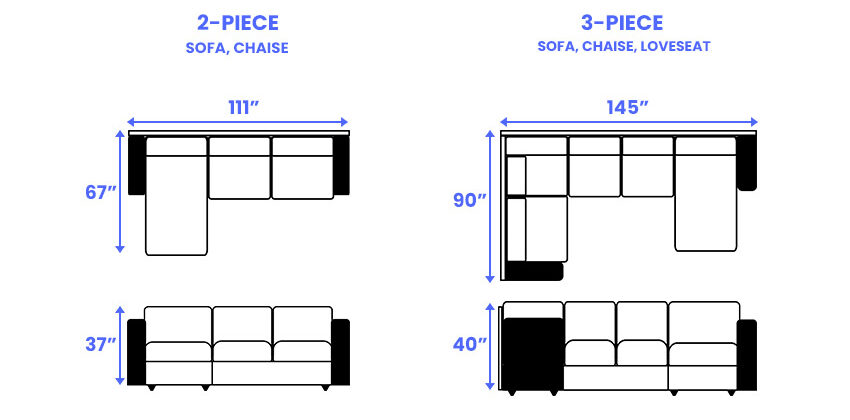
A 2-piece has a standard length of 67 x 111 inches or 229 x 282 centimeters, while the a 3-piece is usually 90 x 145 inches or 170 x 368 centimeters.
A 4-piece would have two loveseats, a corner wedge, and a chaise all in one. A 5-piece, on the other hand, has an armless loveseat, wedge, right-facing corner chaise, left-facing loveseat, and an armless chair.
A 4-piece will have an average length of 97 x 146 inches or 246 x 371 centimeters, while a 5-piece will be only slightly longer with 111 x 153 inches or 282 x 389 centimeters.
A 6-piece has a left-facing chaise, armless loveseat, corner wedge, armless recliner, and a right-side recliner with the addition of a console that can also include storage. It can be longer, but it starts at 107 inches x 118 inches or 272 centimeters x 299 centimeters. Read more about loveseat dimensions here.
Sectional Width
Smaller sectionals like the 2-piece ones are perfect for sprawling in a smaller living room. They offer comfort, but still you should be mindful of the limited floor space.
A 3-piece is slightly more prominent and the most commonly used in typical size homes. For a 2-piece, the width is usually 111 inches or 282 centimeters, while a 3-piece will be in the 145 inches or 368 centimeters range, depending on what type it is.
4-piece to 6-piece types are perfect for entertaining and bigger families, so if you are fond of the former and a part of the latter, then this size range will be what you want to begin with on your search. For a 4-piece, the width is usually 146 inches or 371 centimeters, and this size will increase a little to 153 inches or 389 centimeters for a 5-piece.
For a 6-piece sofa, it usually comes with a 118-inch width or 300 centimeters. It will depend on the style and how long or how thick you like to buy them.
Sectional Height
The height is measured from the base of the sectional up to the top of the highest point of the sectional.
For a 2-piece with plush cushioning, padded arms, and a pillowed back, it has a 37-inch height or 94 centimeters. This height will increase slightly for a 3-piece sofa at 40 inches or 102 centimeters.
Remember that the height of a sofa will be all over the place and will depend entirely on the style.
With that in mind, a 4-piece will have a midrange of 34 inches or 86 centimeters in height and can go lower or higher depending on the style.
This is also true for a 5-piece with a standard height of 38 inches or 97 centimeters.
A 6 piece, on the other hand, has a 40-inch height or 102 centimeters. This is true for most reclining types.
Dimensions of Small Sectional
Smaller types are available if you want them, whether they are composed of an armless armchair or a chaise or something bigger with a loveseat and a chaise. They are great at comfort and will still work well in a smaller space.
The Mags Soft Low Sectional with Chaise is an example of a minimal type that would still offer a lot to the user. This has dimensions of a height of 28 inches or 71 centimeters, a length of 97 inches or 247 centimeters, and a depth of 50 inches or 128 centimeters.
Another perfect example of a smaller sectional is the Outline with Chaise. This has a height of 27.5 inches or 70 centimeters, a length of 103.25 or 262 centimeters, and a depth of 56 inches or 142 centimeters.
L-Shaped Sectional Couch Dimensions
As was stated before, many smaller couches are L-shaped, but of course, there are also more oversized L-shaped types perfect for a bigger family. An L-shaped sofa will either have a sharp corner piece or a rounded wedge, and we will provide both standard dimensions for a 3-piece L-shaped sectional.
For an L-shaped sofa with a sharp edge, the width for one side is 116 inches or 295 centimeters, while the depth on the other side is also 116 inches or 295 centimeters. The standard height with a backrest is 35 inches or 89 centimeters, while the chair height is 24 inches or 61 centimeters.
An L-shaped sofa forms an incomplete social circle. Place an armchair or two diagonally from the corner of it. – Feng Shui Modern, Cliff Tan
For an L-shaped sofa with a curved wedge piece on the corner, its dimensions are 130 inches or 330 centimeters in width, and the depth on the other side is also 130 inches or 330 centimeters. The height is 35 inches or 89 centimeters from the base to the backrest, while the chair height will also be 24 inches or 61 centimeters.
Sectional with a Chaise
Some sectionals have chaises, although some may not. Most L-shaped types are complete with a chaise, although bigger L-shaped sofas, especially reclining ones, don’t come with chaises. For maximum comfort and seating space, sectionals with chaises can have one or even double chaises.
For a U-shaped type with a double chaise, the height is 28 inches or 71 centimeters, 165 inches or 419 centimeters for the length, and a depth of 80 inches or 203 centimeters for both chaises. The seat height is 16 inches or 41 centimeters.
What Size Rug With a Sectional
Now that you have decided what sectional couch to purchase for your home, it’s time to consider decorating it. The most apparent thing to do is buy a bunch of throw pillows and add a rug underneath the furniture.
Buying a living room rug is easy; all you need to know is your sectional’s width and depth. Visit our guide to rug placement under living room sectional sofa here.
For a smaller sofa around 72 to 96 inches in width and 96 inches in length, a 4×6, 5×7, or 6×9 inches carpet would be perfect. For medium types, around 96 to 120 inches in width with a length of 120 centimeters, a rug that is 9×12 or 8×10 will be appropriate for this size.
Oversized variants with a width of 120 to 168 inches and a length of 168 inches will need a rug with a size of 10×14 or 9×12.
How to Measure a Sectional?
The first to measure is the height, and to do that, simply measure the couch from the underpart to the highest point of the seat’s backrest and measure the width from one arm to the other, left to right.
For the depth, you need to measure from the front to the back of the longest side of the sectional.
How Much Space Do You Need Around a Sectional?
A sectional would offer more seating and would make any space look stunning, but the only downside to this seating option is that it needs space.
Leave at least 24 inches or 61 centimeters of space around the seat unless pushed on the wall on one side. This space is required so people can have room to walk around.
Measure your wall space, especially if the couch will be pushed against the wall. The size to consider is the width of the sofa.
For more related content, visit our sofa dimensions guide here.

